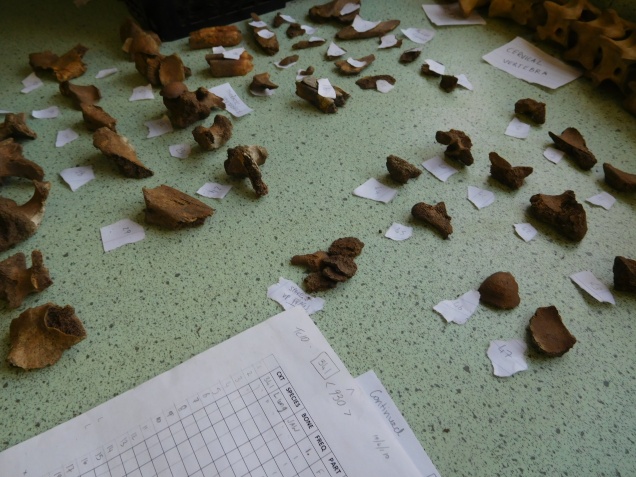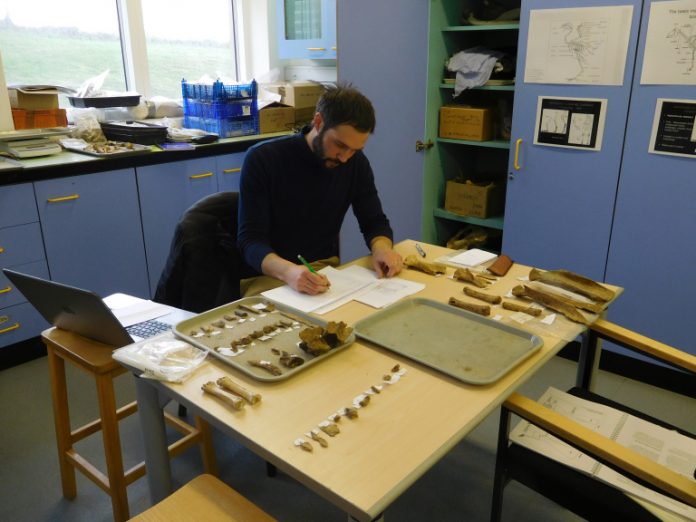Work does not stop when excavations are covered over for the winter. The all important post-excavation work continues. Postgraduates and undergraduates studying at the University of the Highlands and Islands Archaeology Institute have the opportunity to work on exciting material from the summer’s excavations as part of their studies.
Kai Wallace, a fourth-year student studying BA (Hons) Archaeology at Perth College UHI, has come up to Orkney to work on bone assemblages recovered from The Cairns this summer. This important research work will form the basis for his dissertation on animal bone groupings in Iron Age Orkney.
 Unusually there is little evidence for complete articulated bone assemblages in Iron Age Orkney. Unlike England and the Western Isles, where animal burials are common, most animal bone remains are found disarticulated with little sign of deliberate deposition such as ritual activity.
Unusually there is little evidence for complete articulated bone assemblages in Iron Age Orkney. Unlike England and the Western Isles, where animal burials are common, most animal bone remains are found disarticulated with little sign of deliberate deposition such as ritual activity.
However recent discoveries at The Cairns, including the discovery of a human jawbone and whalebone vessel, point to a highly ritualistic culture. So why is there no real evidence for articulated bones in Iron Age Orkney?
The reasons behind this could be varied and could be due to weathering, erosion or the fact that the various bones recovered have not been recognised as part of the same animal. Kai is re-examining a sample of the animal bones unearthed at The Cairns and is piecing together bones that may have been part of the same animal. This requires patience and a knowledge of animal anatomy in addition to archaeological skills, but with the help of Dr Ingrid Mainland, Kai is making progress in this giant sized jigsaw puzzle!
Already an articulated assemblage, discovered lying on top of the capping stone of the broch ‘well’, has been identified as the backbone of a sheep and a series of red deer bones look as if they may be part of one animal that was placed with its head tucked under its body.
Kai’s research is beginning to piece together the story of these bones and add more detail to the way of life of the people of The Cairns 2000 years ago.
If you are intrigued by the history and archaeology of the Scottish Highlands and Islands and want to learn more, either drop us a line through studyarchaeology@uhi.ac.uk or go to our guide to courses on this blog or visit our University of the Highlands and Islands Archaeology Institute web page


